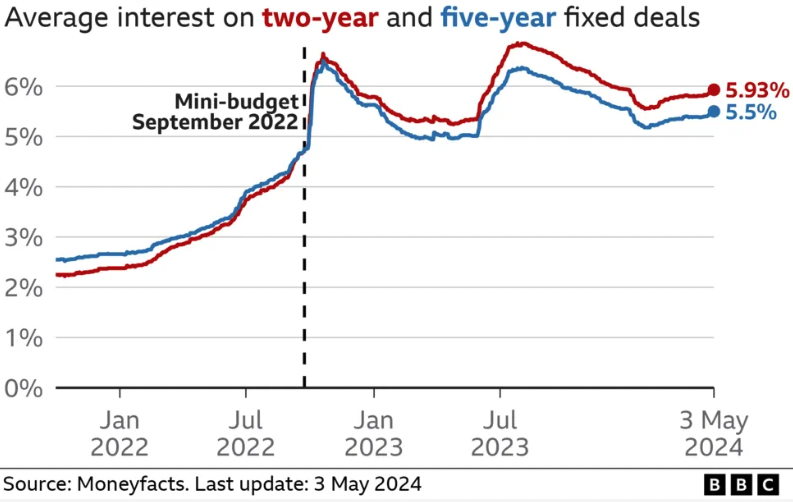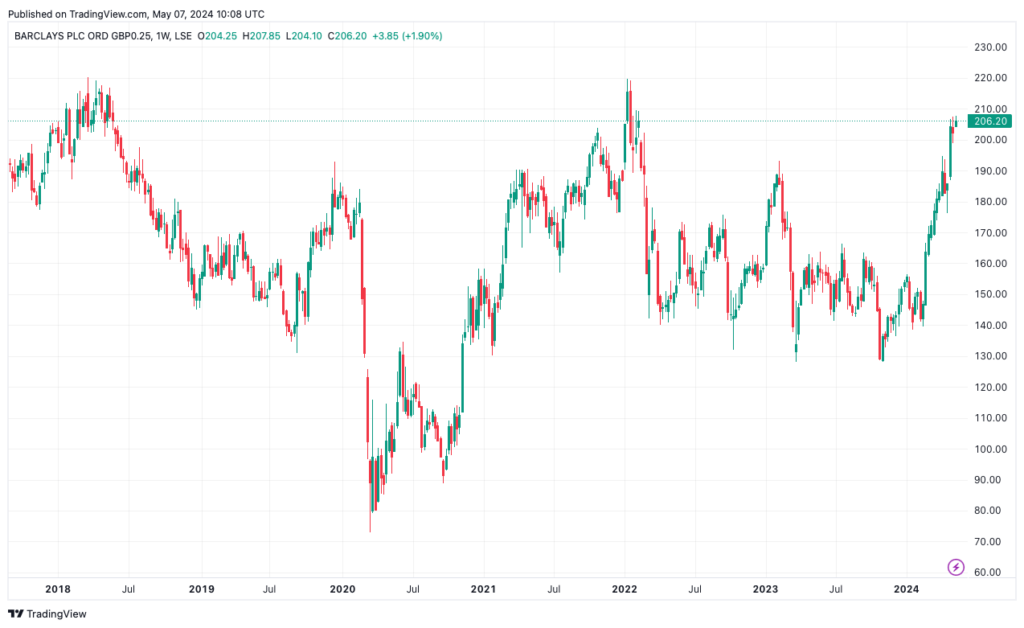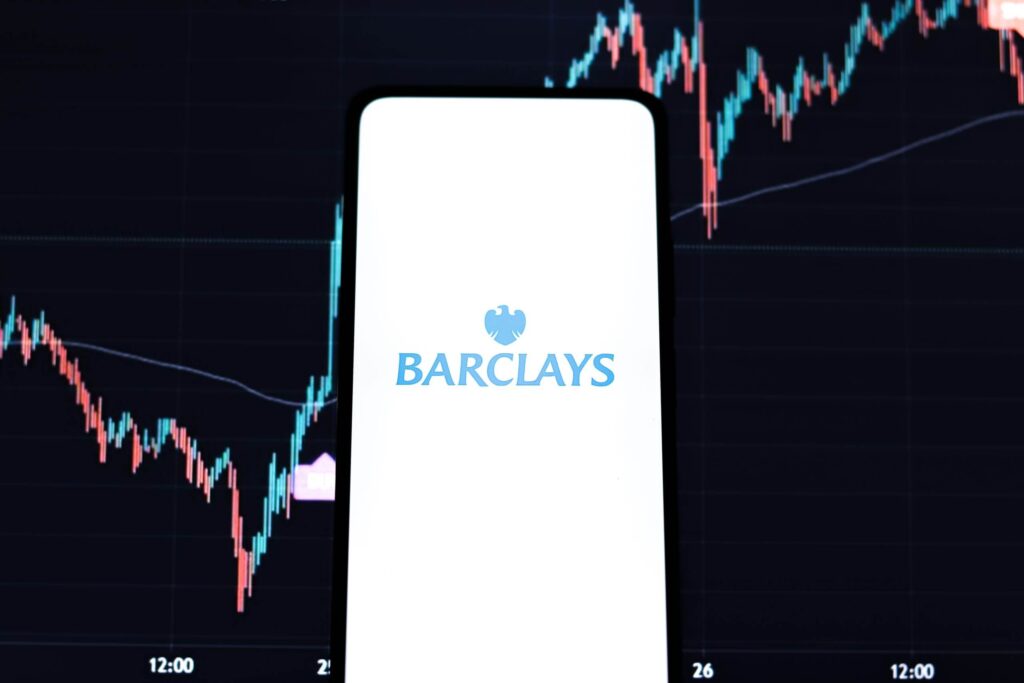As the fervour of local elections passed, investors turn their attention back to macroeconomic data.
On Tuesday, one of the more important updates to hit the screen concerns property. Specifically, Halifax, the mortgage lender, assessed that the national average house price rose by 1.1 percent on an annual basis. This brings the average house price to a grand £288,949. Compare to the house price a decade ago – £184,464 – that’s a great return of +56 percent. Like many things, properties then were far more affordable and wallet-friendly. Repayments were lower.

Source: Halifax
The question that concerns the market nowadays is this: Will UK property prices see a significant downturn? A few reasons are weighing on investor expectations.
- First, UK mortgage rates have surged. Take a look at these recent trends in mortgage rates (2- and 5-year segments). Despite a more stable government and falling energy and food costs, UK mortgage costs have not really declined much. In fact, these borrowing costs are still hovering near the spike levels registered back in 2022. Ergo, consumer spending are compressed.
- Second, UK’s macro outlook remains cloudy. Growth is hard to come by; and many trade frictions are continuing to plague the country’s exports.
- Third, inflation is, contrary to the market’s expectations, sticky. As such, the Bank of England is unlikely to slash the Bank Rate much this year. This means other borrowing costs like the mortgage rates will stay elevated. Taken together, investors are hardly expecting a massive growth in house prices in the coming quarters.

Source: BBC
But not all is gloom and doom. A rare sparkle is that the FTSE 100 Index has (finally!) hit new all-time highs. Mortgage approvals jumped to a 17-month high; whilst mass unemployment is at bay.
This suggests a firm undercurrent and strong resiliency in the economy. Therefore, I wouldn’t take an overly negative view of the British economy. Perhaps the country is just ‘muddling through’, fostering a climate of uncertainty where sentiment swings from positive to negative overnight. A cool and steady temperament is needed.
Barclays (BARC) rally pauses at resistance
One of the sectors to enjoy bumper returns amidst this ‘muddle through’ economic scenario is the financials.
Since interest rates started its steep and steady ascent in 2022, banks are harvesting on high net interest income. One particular trend underpinning this favourable outlook is the low default rates. What is more, banks are earning more on their reserves deposited with the central bank. According to a report, the Big Four UK banks earned nearly £9.3 billion on these reserves last year.
In the first quarter, Barclays’s (BARC) gross income hit £7 billion whilst pre-tax profits reached £2.5 billion. Its stable profit trend allows the UK bank to return more capital to shareholders. In particular, Barclay’s CEO CS Venkatakrishnan promised to return £10 billion to shareholders over the next three years via dividends and share buybacks. Immediately this boosted Barclays’ share price.
In the weeks following that February corporate update, Barclays surged from the 140p region to break through multiple overhead resistance levels (see below). Judging from the ferocity of this steep uptrend, it suggests that the stock was way too oversold at 130p-140p. However the psychological resistance at 200p may pause the rally. Given that Barclays has broken the downward torpor, a correction may be used as a buying opportunity.


Jackson is a core part of the editorial team at GoodMoneyGuide.com.
With over 15 years of industry experience as a financial analyst, he brings a wealth of knowledge and expertise to our content and readers.
Previously, Jackson was the director of Stockcube Research as Head of Investors Intelligence. This pivotal role involved providing market timing advice and research to some of the world’s largest institutions and hedge funds.
Jackson brings a huge amount of expertise in areas as diverse as global macroeconomic investment strategy, statistical backtesting, asset allocation, and cross-asset research.
Jackson has a PhD in Finance from Durham University and has authored over 200 guides for GoodMoneyGuide.com.
To contact Jackson, please ask a question in our financial discussion forum.

